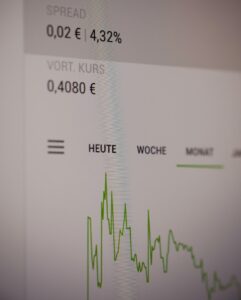Understanding Forex Basics: The Importance of Currency Pairs
In the world of forex trading, currency pairs are at the core of every trading decision. They represent the relative value of one currency against another and serve as the foundation for all forex transactions. To grasp the fundamentals of forex trading, it is crucial to understand the concept of currency pairs and their significance in the market.
A currency pair is a quotation of two different currencies, where one is quoted in terms of the other. For example, the most popular currency pair, EUR/USD, represents how many US dollars are needed to buy one euro. In this case, the euro is the base currency, while the US dollar is the quote currency. Currency pairs are always expressed in a standardized format, with the base currency listed first, followed by the quote currency.
The forex market operates on the principle of exchange rates, which determine the value of one currency relative to another. Exchange rates fluctuate constantly due to various factors, such as economic indicators, geopolitical events, and market sentiment. Traders aim to profit from these fluctuations by buying a currency pair when they believe its value will rise and selling it when they expect it to fall.
Currency pairs are classified into three main categories: major pairs, minor pairs, and exotic pairs. Major pairs consist of the most widely traded currencies, including the US dollar (USD), euro (EUR), Japanese yen (JPY), British pound (GBP), Swiss franc (CHF), Canadian dollar (CAD), Australian dollar (AUD), and New Zealand dollar (NZD). These pairs offer high liquidity, tight spreads, and are generally less volatile compared to other pairs.
Minor pairs, also known as cross-currency pairs, exclude the US dollar and consist of two major currencies. Examples include EUR/GBP, AUD/CAD, and GBP/JPY. While minor pairs may have lower liquidity and wider spreads, they can provide opportunities for traders who have expertise in specific currency pairs or regions.
Exotic pairs are formed by combining a major currency with a currency from an emerging or less frequently traded economy. Examples include USD/TRY (US Dollar/Turkish Lira), USD/ZAR (US Dollar/South African Rand), and GBP/MXN (British Pound/Mexican Peso). Exotic pairs tend to have wider spreads, lower liquidity, and higher volatility, making them riskier for inexperienced traders.
The choice of currency pairs to trade depends on a trader’s strategy, risk tolerance, and market conditions. Major pairs are often preferred by beginners and conservative traders due to their stability and liquidity. They provide a good starting point for understanding market dynamics and developing trading skills. Minor and exotic pairs, on the other hand, may offer more potential for experienced traders who are willing to take on additional risk.
When analyzing currency pairs, traders use two types of analysis: fundamental analysis and technical analysis. Fundamental analysis involves evaluating economic indicators, central bank policies, and geopolitical events to determine the future direction of a currency pair. Technical analysis, on the other hand, focuses on price patterns, trends, and indicators to predict future price movements. Both types of analysis are essential for making informed trading decisions.
In conclusion, currency pairs are the building blocks of forex trading. They represent the relative value of one currency against another and serve as the foundation for every forex transaction. Understanding the different types of currency pairs and their characteristics is crucial for traders to develop effective trading strategies. Whether trading major, minor, or exotic pairs, traders need to conduct thorough analysis and stay updated on market developments to make informed trading decisions.






